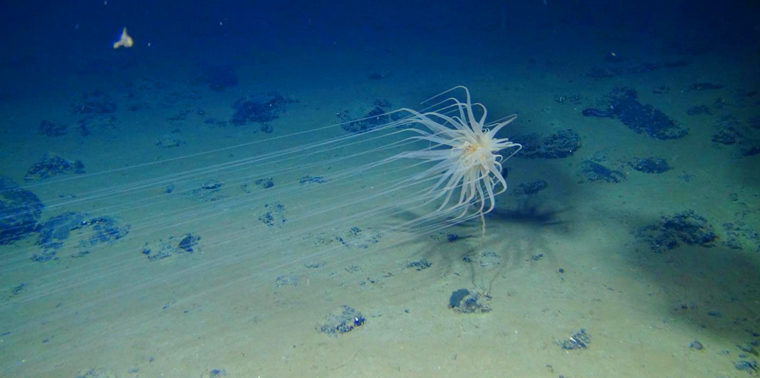
In the Depths of the Oceans, Human Activities Are Beginning to Take Their Toll
June 29th, 2017Imagine sinking into the deepest parts of the Central Pacific Ocean, somewhere between Mexico and Hawaii. Watch as the water turns from clear to blue to dark blue to black. And then continue on for another 15,000 feet (4,600 meters) to the seafloor — roughly the distance from the peak of California’s Mount Whitney to the bottom of nearby Death Valley.
“As soon as you start to descend, all of the wave action and bouncing goes away and it’s like you’re just floating and then you sink really slowly and watch the light fade out through the windows and then you really are in another world,” says Erik Cordes, a researcher at Temple University and frequent visitor to the deep ocean.
Finally, you come to a stop 12,000 feet (3,700 meters) below the last bits of light from the surface. The water here is strangely viscous yet remarkably transparent, and the light from your flashlight extends for hundreds of yards. You are in the heart of the Clarion-Clipperton Fracture Zone, a region of the ocean seafloor roughly the size of the United States, populated by colorless invertebrates adapted in astounding ways to the sparse, crushing conditions found here.
And all around you — as far as the eye can’t see — are small, spherical rocks. Varying from microscopic to the size of a volleyball, they look like something stolen from the set of “Gremlins” or maybe “Invasion of the Body Snatchers.”
And they’re worth millions. Because inside these mysterious little eggs are untouched stores of copper, titanium, cobalt and especially manganese — crucial for making anything from the steel in your car’s frame to the circuitry that tells you how much gas is left in it. Some metals exist in larger quantities here than on all the continents of the world — and you had better believe they have caught the eye of mining companies.